Incredible silent film captures 1912 opening of St Kilda’s Luna Park
High-wire walkers were among the daring acts to greet the first Luna Park patrons in 1912. Now a silent film reveals the spectacle of opening day.
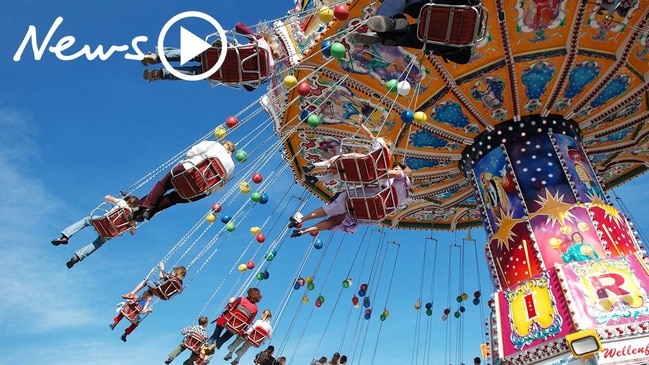
Victoria
Don't miss out on the headlines from Victoria. Followed categories will be added to My News.
When St Kilda was still where Melburnians went to get away from it all, Luna Park shone like an electric-powered beacon.
The amusement park opened to the public for the first time on Friday, December 13, 1912, and we were drawn to it like moths to the thousands of light globes that gave it such a warming glow.
It was a little piece of Americana transplanted from New York’s Coney Island by American brothers Leon, Herman and Harold Phillips and compatriot JD Williams, and was built by construction engineer TH Eslick.
The Americans had built luxury cinemas in Sydney and Melbourne after successful ventures in Vancouver and the US state of Washington, and modelled Melbourne’s Luna Park on amusement parks of the same name at Coney Island and Seattle.
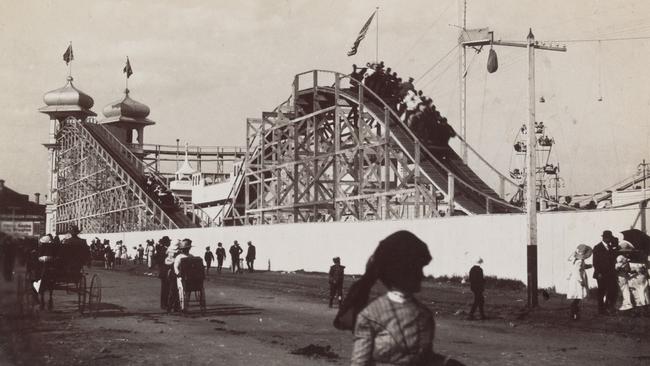
Our Luna Park was established on the site of a failed amusement park called Dreamland. It was a swamp that, once Europeans arrived, became St Kilda’s first tip until it was filled with rubbish.
Construction cost £20,000 — more than $2.48 million in today’s currency.
Melbourne had not seen anything like it before — and not just because of Mr Moon, the gaping moon face with rolling eyes that delighted many and terrified a few.
The Scenic Railway, with its commanding view over the park, St Kilda and the bay, was the star of the show.
There was a Ferris wheel, a wooden contraption known as the American Bowl Slide, a penny arcade so foreign to Melburnians that they had to convert their currency to American cents to use them, the underground River Caves of the World, the Palais de Folies auditorium, acrobats, highwire acts and the Palace of Illusions, where performers wowed the punters with magic shows.
One of the highwire artists dressed as an elephant as they balanced high above the concrete below.
Bands played, and patrons crowded the crystal hall of mirrors, the photo booth and the open-air stage, where many performers plied their trades.
Men donned suits and straw boaters. The ladies favoured full, flowing gowns and gay bonnets.
Refreshments were served at the tea terraces, overlooking the park.
Federal External Affairs Minister Josiah Thomas officially opened the park before 600 invited on the evening of Friday, December 13, 1912.
Table Talk, a Melbourne magazine, said thousands crowded outside waiting to burst through the turnstiles.

“Towards St Kilda Esplanade the tide of humanity flowed on Friday and Saturday with irresistible force; tram-cars every half-minute with holiday-making folks hanging on to straps and stanchions; a continuous stream of people down Fitzroy St from the railway station; little rivulets from every side street, and, through it all, big noisy motor-cars like vessels in the ocean,” Table Talk reported.
The Argus said Luna Park was decorated with Chinese and Japanese lanterns along with its thousands of electric lights, and patrons flocked to see a short, one-act Egyptian-themed play called Pharaoh’s Daughter on the outdoor stage that was performed every 20 minutes.
The Malvern Standard’s scribe observed the Great American Bowl and the acrobatic performers.
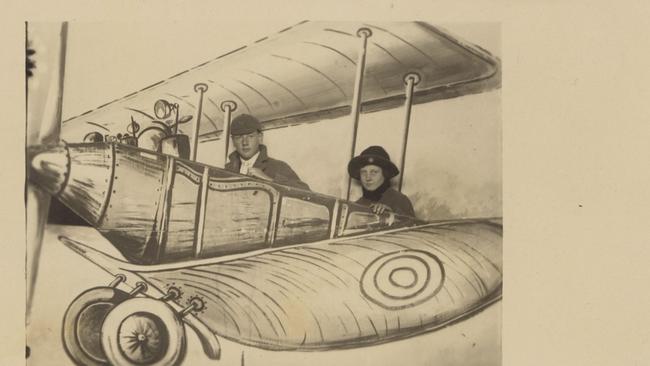
“A chute runs from the top of a mountain to terra firma, and during the voyage one is whirled over the journey in ecstatic profusion” down to a polished wooden bowl about five metres in diameter, the newspaper said.
“Amongst some of the performances of a distinctly thrilling nature are those of Louina and Franz, who, while one holds the other with his teeth, slide along a high wire cable to the ground; Tossing Testros, very clever jugglers; and Herr Granado and Miss Alma Fedora, who, are exceptionally smart wire-walkers.”
Fun-seekers loved the River Caves of the World, which snaked from a pond with swans swimming and took them into an exquisitely decorated subterranean tour that included an Italian-inspired grotto, the den of a dragon with glowing eyes and polar landscapes in an artificial cavern — all from the comfort of furnished boats.
St Kilda in 1912 was already Melbourne’s playground. With Luna Park’s opening, Table Talk declared the bayside suburb our “City of Amusement”.
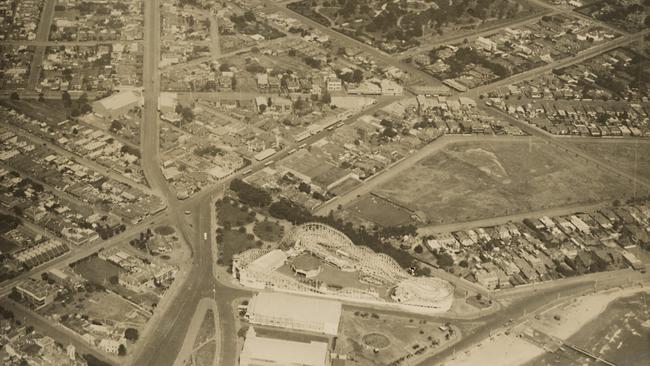
“On the open-air stage, on the wire slide from the tower, and on the highwire various skilled artists performed, while the band played merry melodies, and over all shone the brilliancy of thousands of electric lamps,” its correspondent wrote.
“Up on the great tea terrace, where attendants in costumes of brown and white served refreshments, and where in a pavilion supper was laid for the many guests, the thronging thousands, the life, movement, colour and merriment formed one of the most striking spectacles yet seen in the amusement world of Australia.”
Williams returned to the US in 1913, but the Phillips brothers managed the park into the 1950s.
The dark clouds of The Great War soon dimmed the Luna Park lights, although the Scenic Railway remained in operation and the park opened now and then for patriotic fundraising events.
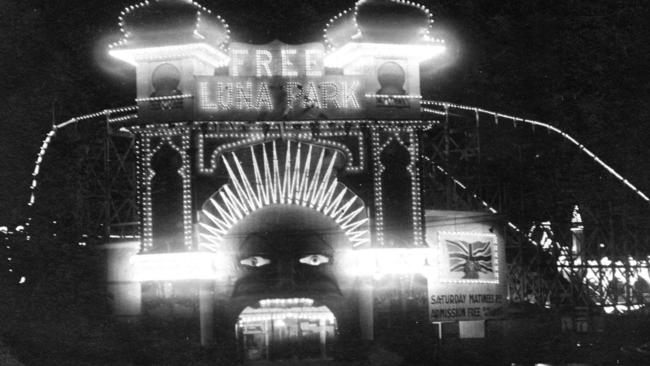
Still, the wartime loss of patronage forced a major remodelling of Luna Park in 1923.
Today, hints of the heady early days of 1912 remain at Luna Park.
Although the Palais de Folies, later known as the Giggle Palace, fell victim to an arsonist and was demolished along with the River Caves in 1981, the Scenic Railway, now the world’s oldest continuously operating roller coaster, is still there.
The Carousel, made in the US and installed in 1913 (featuring a 1909 band organ at its heart, still holds pride of place in the grounds, and familiar moon face facade still beams out across St Kilda Esplanade.
And despite the changes, Luna Park remains a cherished part of Melbourne life.




